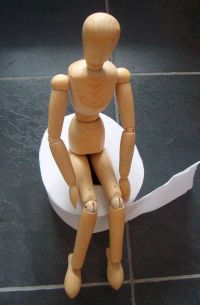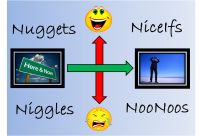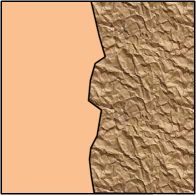 There are some very common system ailments that we do not talk about in public – they are not socially acceptable topics of conversation.
There are some very common system ailments that we do not talk about in public – they are not socially acceptable topics of conversation.
We all know they exist because we all suffer from them at sometime or other – and some more than others.
Our problem is “how do we solve sometheng that no one wants to own up to and talk about?” Grin-and-bear it? Trial-and-error? Or seek competent, confidential, professional assistance?
One such ailment is chronic system constipation. Yes – I said it!
The usual symptoms are recurrent, severe pains in the middle management area associated with ominous rumblings, intermittent eruptions of unpleasant hot “air” and accompanied by infrequent, unpredictable and often inconsequential output.
The signs are also characterstic: bloated budgets, capital distention and a strained and pained appearance of the executive visage.
The commonest findings on further investigation are accumulation of work in progress inside the organisation that is caused by functional bottlenecks, accumulation of undigestable red-tape, and process paralysis. These findings confirm the diagnosis.
The more desperate organisations may seek help from corporate quacks who confidently prescribe untested yet expensive remedies such as mangement purges and corporate restructure. These harsh treatments only serve to impoverish the patient and exacerbate the problem. They are also sometimes fatal.
The patient who avoids or survives the quacks may seek competent help – and reluctantly submit themselves to a more intimate examination of their orifices. This proceeds in a back-office to front-of-house order looking for accumulations of work-in-progress (WIP) and their associated causes. The usual finding is apathetic and demoralised staff burned out by over-complicated, error-prone processes and pushing against turgid bureaucracy.
The first stage of treatment is to relieve the obstruction that is closest to the discharge orifice first.
Often the intimate examination itself is sufficient to stimulate spontaneous ejection of the offending obstruction; sometimes a corporate-level enema is required to facilitate the process. Either way the relief is immediate, dramatic and welcomel and is usually followed by vigorous expulsion of the remaining offensive material and restoration of both regular flow and disspiation of the gaseous bloating.
The timid or inexperienced corporoproctologist may be tempted to try exogenous stimulants instead – an inspiring podcast or an executive awayday perhaps. This well-interntioned palliative treatment may distract attention and sooth the discomfort but the effect is short-lived and the symptoms soon return; often with a vengeance.
The more courageous and experienced Improvement Science practitioner knows that “if you don’t put your finger in it you will put your foot in it” and they come prepared with the organisational equivalent of rubber gloves and lubricating gel: flip charts and hot coffee.
So to avoid the squirming discomfort of the probing questions it is better to seek enematic advice well before this stage. And you may not be surprised to hear that it is all common-sense:
-
Avoid all high-bureaucracy diets.
-
Steer clear of high-technology quick-fixes.
-
Stimulate the flow of creativity with regular service improvement exercises.
-
Monitor continuously for corporate complacency.
-
Treat early and vigorously with a high-challenge dialog.
But we know all this – don’t we? It is just common sense.




